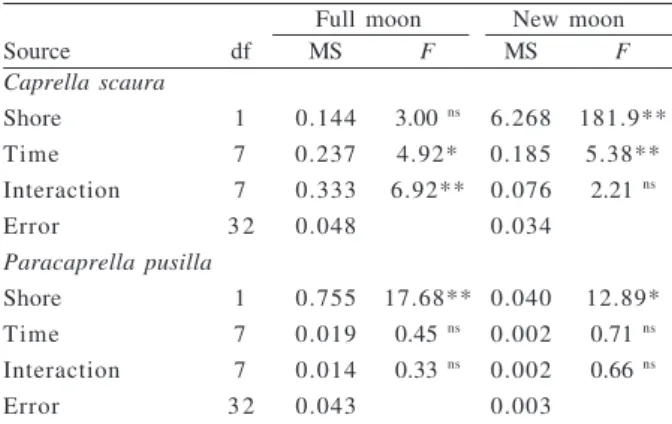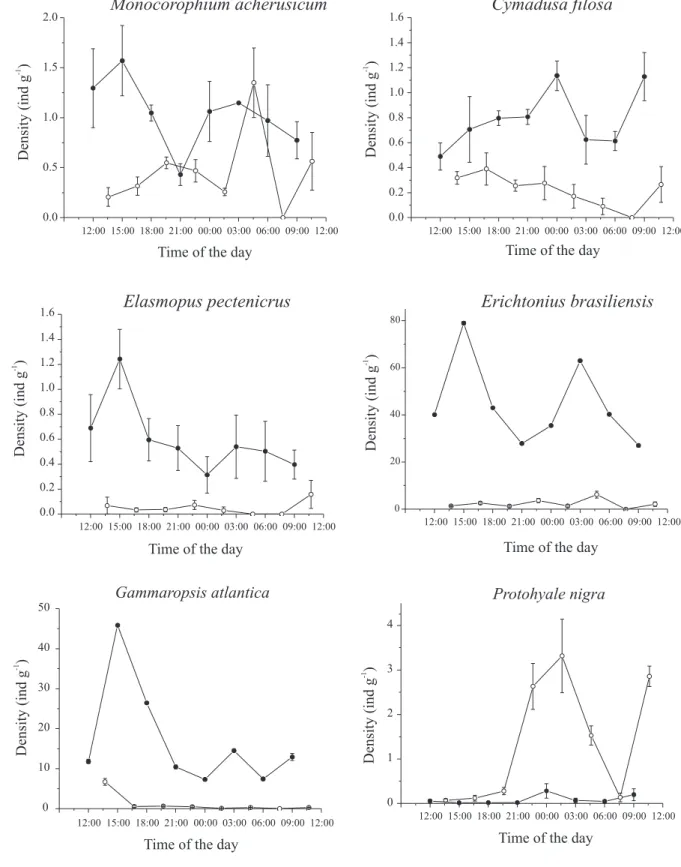Diel density variation of amphipods associated with Sargassum beds from two shores of Ubatuba, Southeastern, Brazil
Texto
Imagem




Documentos relacionados
Em seus estudos, Chin e Ching (2009; 2012) indicaram a existência de esforços por parte das instituições de ensino superior no mundo na geração de graduados com
The substrate constitution of the studied sites, with sand and rock fragments, create an heterogeneous environment that support both sandy beach and rocky shore species (Denadai
food preference and habitat selection by amphipods, we conducted laboratory experiments using containers containing fragments of algae and individuals.. of
During the last two decades zoological material collected in central-western and northeastern Brazil (states of Piauí, Tocantins, and Goiás – Cerrado biome), southeastern Brazil
Ordination of the species (number of individuals) in relation to season (day/night) resulting from principal components analysis (PCA) applied to abundance (n) data matrix in the
A taxonomic list and average relative abundances (± standard deviation) (n = 60) of the species recorded in the rocky shore of the Costa, Setibão and Ubu areas, state of
A combination of fi ve factors is likely to be associated with the reemergence of yellow fever in southern and southeastern Brazil (recent epizootics and epidemics): exposure of
Body size, female reproduction and sexual dimorphism in the lizard Ameiva ameiva (Teiidae) in a resting of southeastern Brazil. Reproductive variation of the lizard